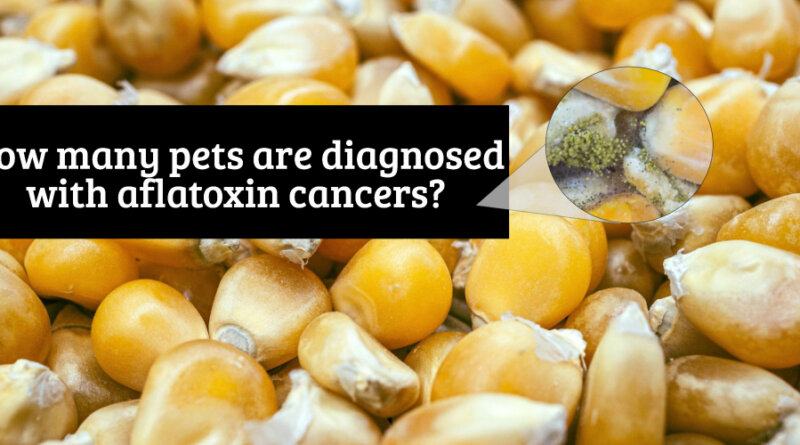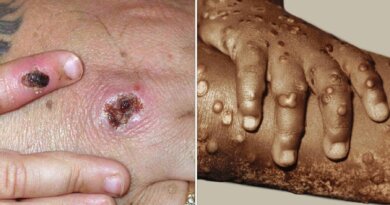the Cause of 100,000 Cases of Liver Cancer Per Year – Truth about Pet Food
[ad_1]
From a post at Food Safety Magazine: “…at the 2022 Institute for the Advancement of Food and Nutrition Sciences’ (IAFNS’) Annual Meeting and Science Symposium, Felicia Wu, Ph.D., discussed her recently published study about the rising prevalence of aflatoxin in U.S. corn…”
A concerning quote from the post regarding Dr. Wu’s presentation:
“Aflatoxin poses a public health risk due to its association with liver cancer, and aflatoxin is “the most potent, naturally occurring human carcinogen.” Approximately 100,000 cases of liver cancer are caused by aflatoxin per year…”
Dr. Wu’s statistic of “100,000 cases of liver cancer” per year caused by aflatoxin are human illnesses. If aflatoxins are the cause of 100,000 human liver cancers each year…how many pets are diagnosed with liver cancer each year caused by aflatoxins in pet food?
No Tracing.
Pet Food related illness are not tracked as they are in human food. While some veterinary clinics might document the pet food brand a newly cancer diagnosed dog or cat is/was consuming, (to our knowledge) there is no national database for veterinarians to track specific cancers potential link to pet food or pet food ingredients. To further complicate tracing of pet food related cancers/illnesses in pets, some veterinary clinics pose a potential conflict of interest to collect data. Such as, a significant portion of veterinary clinics in the US (and globally) are owned by Mars Petcare – the largest manufacturer of pet food in the world. It’s unlikely a pet food owned veterinary clinic would link their brands of pet food to a pet illness.
Pet Feed Ingredient Quality.
Per the FDA: “Aflatoxins are produced by molds of the Aspergillus species. Aspergillus can grow on grains and seeds during growing season as well as after harvest during storage.”
Corn is THE most commonly used grain in pet foods. Based on a 2020 report from the Institute for Feed Education & Research…
…more than twice as much corn is used in cat and dog foods than any other ingredient.
The United States Department of Agriculture (USDA) has a grading system for corn, lowest grade number (U.S. No. 1) equals the highest quality. The highest quality corn has the least percentage of broken and damaged kernels.

Human foods (and human grade pet foods) include only the highest quality of corn, mostly US No. 1 and No. 2 – the grades of corn with the least amount of broken/damaged kernels. Unfortunately, all grades of corn are allowed in pet food, including the most inferior grades.
The risk of aflatoxin/mycotoxin contamination increases with inferior grades of corn/increases with the higher percentage of broken or damaged kernels. Iowa State University Extension and Outreach services states “Mold and mycotoxin issues tend to be worse on broken and damaged kernels and fines relative to sound, whole kernels.” University of Kentucky Cooperative Extension Service states “However, broken kernels are more susceptible to mold invasion and insect infestation and will not store as well as sound corn.”
Pet owners are alerted to some pet foods that contain dangerously high levels of aflatoxin/mycotoxins – such as when a pet food is recalled. But what about lower levels of aflatoxin or higher levels that go undetected?
Hair Test (soon) and Provide Your Pet Foods that Mitigate the Risks of Mycotoxins.
Knowing that 100,000 cases of liver cancer linked to aflatoxin in humans are diagnosed each year, and knowing that pet feeds commonly use inferior quality grains most prone to aflatoxin contamination – we can speculate the number of liver cancers in pets linked to aflatoxin is staggering.
In February 2021, we asked the FDA to implement increased monitoring plan for aflatoxin in pet food. The agency did not respond, thus far ignoring our request.
And the aflatoxin/mycotoxin risk to pets continues with few options for monitoring levels already in your pet. In human medicine, patients have the opportunity to learn the level of aflatoxin contamination in the body through urine tests. We asked veterinarian Dr. Laurie Coger if the same testing is available for pets. In a quick search of commonly used veterinary labs Dr. Coger could not find any similar testing options for pets.
There is some good news…
We also checked if hair analysis could provide aflatoxin levels in a pet. We spoke with Chelsea Kent of ParsleyPet.com, a company that provides hair analysis for monitoring multiple pet health issues. Chelsea stated they are including aflatoxin hair analysis in the very near future.
Dr. Karen Becker and Rodney Habib’s best selling book – The Forever Dog – contains information on mitigating strategies for mycotoxins in dogs (for those that have the book, see page 219). Dr. Becker offered this information from the book on Facebook:
“Today’s The Forever Dog Longevity Tip
Add some apiaceous vegetables (e.g., carrots, cilantro, parsnips, fennel, celery, parsley) to your dog’s dry or canned food!
These gems contain polyacetylenes, an unusual class of organic compounds that has antibacterial AND antifungal benefits. They play a key role in detoxifying several cancer-causing substances, specifically MYCOTOXINS. Mycotoxins are tasteless, odorless fungal toxins found in pet food ingredients that cause organ damage and immune problems.
Eliminating mycotoxins from your dog’s body can be really difficult but serving up apiaceous veggies is a great way to enhance the metabolism of these toxic compounds!“
Dr. Becker also offers this post for introducing vegetables to cat and dog diets.
Dr. Judy Morgan offers this post regarding vegetables added to cat and dog diets.
If your pet’s food contains grains, ask the manufacturer if the product was tested for mycotoxins. Ask for a copy of the lab results of your specific lot number (from the bag or can). Ask again (and again) with each new bag or can (lot) you purchase.
Wishing you and your pet the best –
Susan Thixton
Pet Food Safety Advocate
TruthaboutPetFood.com
Association for Truth in Pet Food

Become a member of our pet food consumer Association. Association for Truth in Pet Food is a a stakeholder organization representing the voice of pet food consumers at AAFCO and with FDA. Your membership helps representatives attend meetings and voice consumer concerns with regulatory authorities. Click Here to learn more.
What’s in Your Pet’s Food?
Is your dog or cat eating risk ingredients? Chinese imports? Petsumer Report tells the ‘rest of the story’ on over 5,000 cat foods, dog foods, and pet treats. 30 Day Satisfaction Guarantee. Click Here to preview Petsumer Report. www.PetsumerReport.com
Find Healthy Pet Foods in Your Area Click Here

The 2022 List
Susan’s List of trusted pet foods. Click Here to learn more.
[ad_2]
Source link




